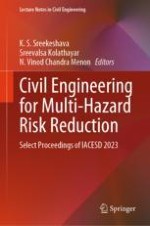This book presents select proceedings of the International Conference on Interdisciplinary Approaches in Civil Engineering for Sustainable Development (IACESD 2023) hosted under the aegis of the Group of Twenty (G20) and Civil 20 (C20) at Jyothy Institute of Technology, Bengaluru, India. The topics covered include sustainable and resilient communities, sustainable construction materials, disaster resilient infrastructure, nano-composites and bio-composites, sustainable geotechnics and earthquake engineering. This book serves as a resource material for researchers and industry professionals interested in disaster risk reduction.
